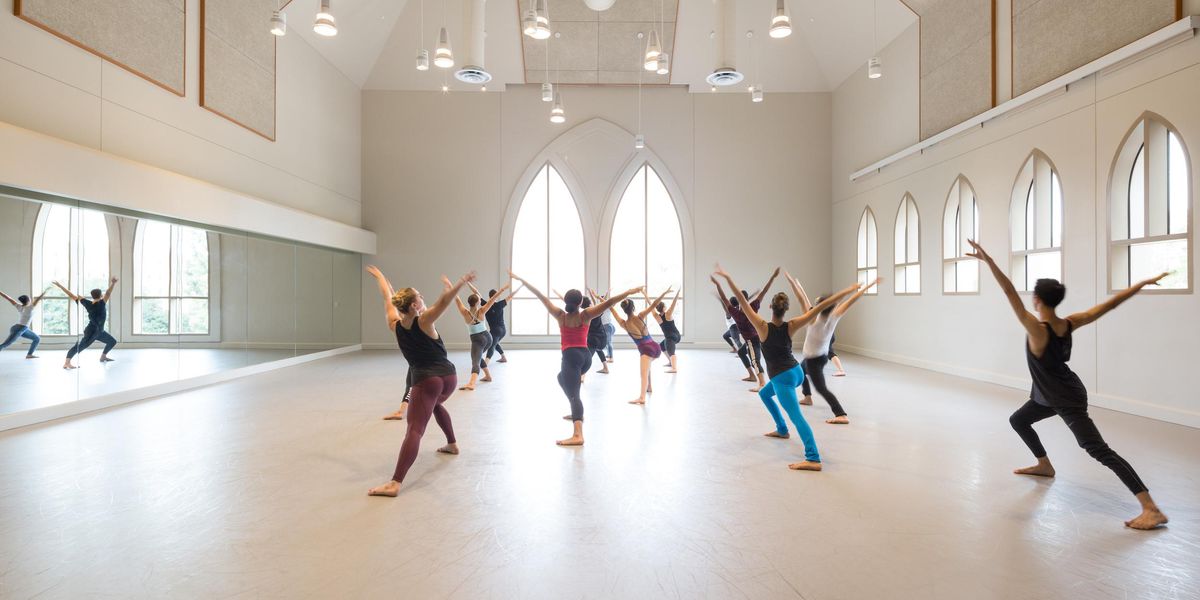How Do You Build the Body of an Ailey dancer?
Everyone expects professional dancers to be in great shape. But a company like Alvin Ailey American Dance Theater, with an annual five-week season in New York, 150 days a year on tour, and over 200 performances annually, requires herculean physical strength and extraordinary mental clarity. Each Ailey dancer develops a regimen that provides endurance for a diverse repertory, sustains their energy and wards off injuries, all while maintaining some semblence of ‘normal’ life. Dance Magazine spoke with the several dancers—including 17-plus-year veterans and husband/wife duo Linda Celeste Sims and Glenn Allen Sims—to unlock the secrets of their superhero stamina.
Cross Training Truths
- Every day before company class, Linda Celeste Sims warms up with at least 20 minutes of floor-barre. Later, during a break in rehearsals, she’ll strengthen her long, flexible arms with two sets of 15 full pushups followed by Thera-Band internal/external shoulder rotator cuff exercises. She also swims 30 minutes three times a week during the season. “It loosens and strengthens, is non-weight bearing, and is so relaxing,” she says. “I’ll even swim after a really tough performance followed by a hot bath!” She and husband Glenn Allen Sims also do various aqua aerobics exercises using foam dumbbells, water gloves and kick boards.
- Fana Tesfagiorgis takes Gyrotonic and Gyrokinesis classes with former Ailey stars Clifton Brown and Renee Robinson to find more length in her dancing and let go of unnecessary tension. “I love training with people who know exactly what I need to strengthen and how I can incorporate Gyro work into my performances,” she says. Before performances, she warms up with the Gyrokinesis chair “homework series”: Sitting on the edge of a chair, isolate the spine with oppositional, repetitive movements—arching and curling, spiraling right and left, shifting the ribcage—then repeating the movements while adding arm reaches in all directions. Seek out areas that feel “locked or tense and trying to fill them with breath and space.”
- YogaGlo.com allows Sarah Daley to take virtual classes on the road. Before highly aerobic pieces, she does yoga’s ‘breath of fire’ (a percussive breath where air is quickly pulled in and out through the nose) for several minutes, to build her lung stamina.
- Yannick Lebrun and Glenn Allen Sims both weight train three times a week to strengthen their upper bodies for partnering. “I work on shoulders, back, chest, but very light weight on legs so I don’t exhaust my muscles for the next day of dancing—I focus on efficiency, not weight,” says Lebrun. Allen Sims prefers cable weight equipment to free weights, as the resistance is more relatable to dance movement.
Maintaining a healthy diet can be challenging on the road, so most Ailey dancers pack their own pots, pans and hot plates to cook up fresh meals like stir-fries instead of eating out every night. For long bus rides, Celeste and Allen Sims stock up on cashews and raisins (“It’s like a peanut butter and jelly without bread!”), almond butter, flax crackers, apples, limes, tortillas and high-quality Italian tuna jars for making wraps, oatmeal, carrots and tomatoes, among other snacks.
- Must-Have Item: NutriBullet “Our theaters often supply fruits and vegetables, so I bring it everywhere to make smoothies at the end of a long day,” says Tesfagiorgis.
Travel Tips
For long airplane rides, Tesfagiorgis asks for three pillows to frame her spine and keep her knees lower than her hips. “I also get up once an hour, stretch in the back and drink lots of water,” she says. Although not vegan, she requests vegan in-flight meals (which generally include potatoes and vegetables, chickpeas, salad and fruit) to avoid heavy dairy products and meats.
The Sims couple discovered working out and little sleep prior to an 8- to 14-hour flight allows them to sleep on the plane and combats jet lag. “I watch one or two movies, have a glass of wine, and then try to sleep the rest of the flight,” says Allen Sims. As soon as they land, the pair explores the city and grocery shops, followed by swimming to work out any airplane kinks, then they head to sleep with the setting sun.
Rest, Relax and Recharge
Like many new Ailey dancers, Daley discovered in her first season that she was more overwhelmed by the emotional and mental toll of the work than the physical challenges. “Sustaining a positive attitude through touring and the City Center run was definitely a journey!” says the four-year veteran. How do the dancers deal with stress during the season?
- Daley: “As soon as I wake up, I meditate, setting an intention for my day—it may be specific to something I’m rehearsing or performing, or maybe I decide to smile at my coworkers. During breaks, I go outside the theater to read or listen to music. I give myself alone time separate from dance, so I can return with a renewed spirit.”
- Lebrun: “Exploring the cities we tour to is so important. I love meeting people and learning about their culture. And if there is a beach, I will go right away!”
- Allen Sims: “I get more sleep while on tour; I try for 8 to 10 hours. I need that time to recharge.”
- Celeste Sims: “People get so wrapped up in their career that there is no space for life. I’m very family-oriented, and cooking allows me to carry a piece of home wherever I go.”
Indulgences
On the list of comforting travel treats, wine (just one or two glasses!) and chocolate rank highest—many of the dancers have a self-diagnosed sweet tooth.
Off-Season Strategy
During their breaks (the longest is three weeks in January), most dancers relax by visiting family or heading to a beach. Yet after a couple days completely off, they still hit the gym and the studio. During the Sims’ annual two-week beach vacation (Barbados is their fave!), Celeste Sims swims every day for 45 minutes, does Pilates three days a week and takes a couple of ballet classes. She believes staying in shape year-round is a huge part of staying injury free.
Tips from the PT:
Shaw Bronner, AAADT’s director of physical therapy
- Cross train at least twice a week for 30 to 60 minutes. Low-impact biking, elliptical and swimming are the most popular choices among Ailey dancers. “An underpinning of strong cardio work can counteract physical fatigue and stop some silly, injury-causing mistakes.”
- Strengthen your core daily. The lumbo-pelvic region is a hot spot for injuries due to hypermobility in the lumbar spine, hips and SI (sacro-iliac) joint.
- Not a fan of traditional crunches (“too much psoas!”), Bronner suggests reverse crunches: Lying with your back on a big physio ball and hands supporting the head, extend backwards slightly, then come up just to the point where your head and shoulders join the horizontal plane of the rest of the body.
- Since ankle sprains are one of the most common injuries, try incorporating ankle control into full body exercises, such as développé while balancing on the BOSU in relevé (and holding a barre).
- Drink more during hot outdoor performances to avoid fatigue-related injuries.





